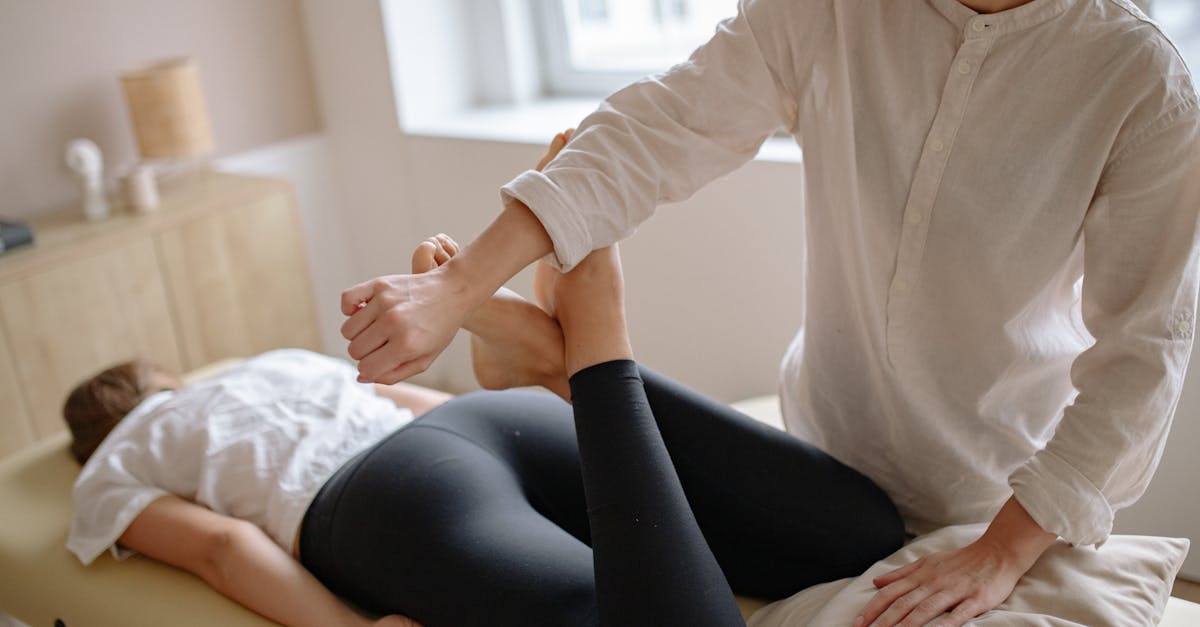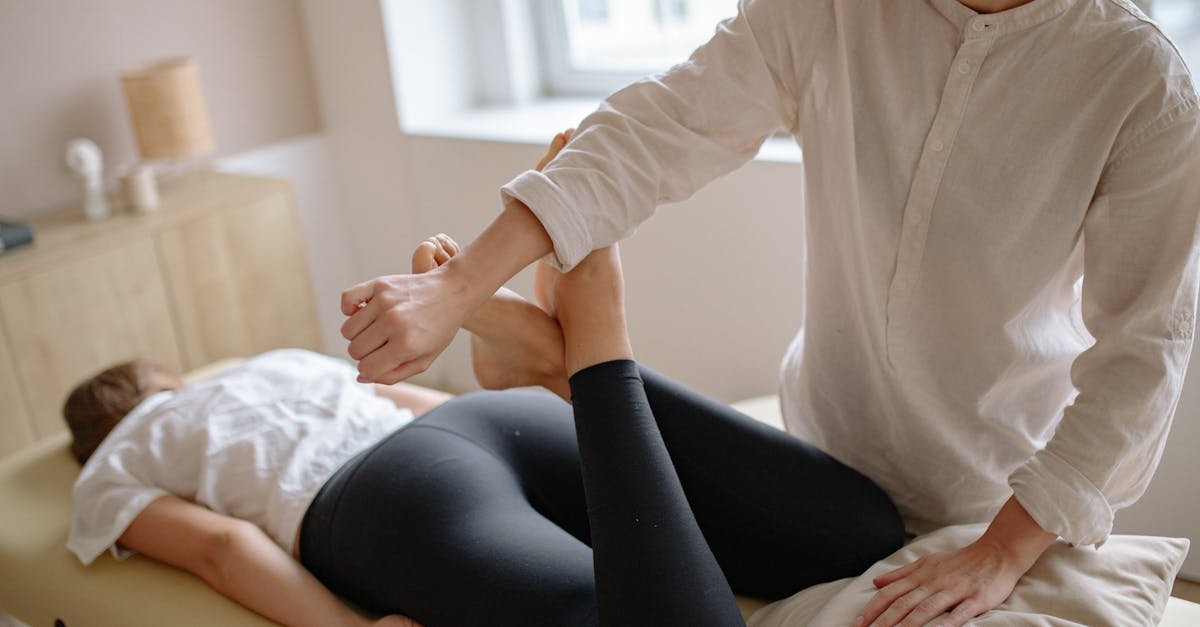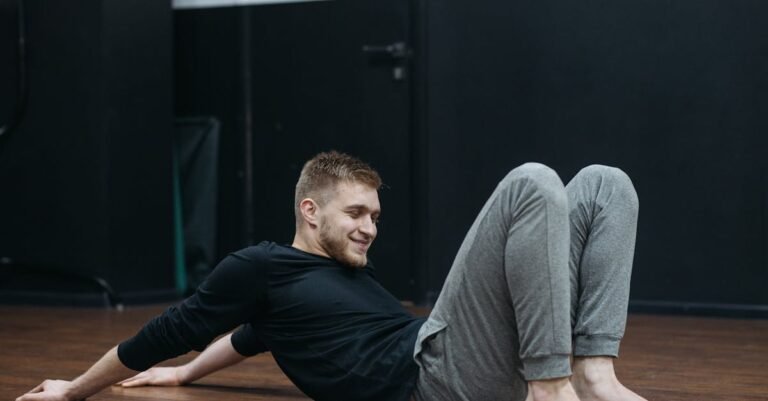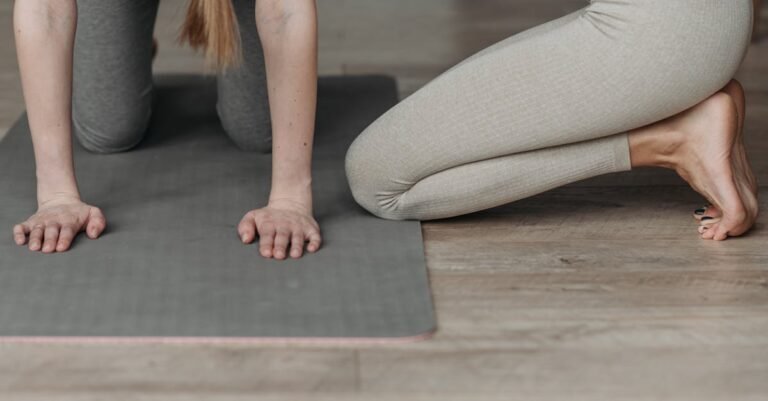Table of Contents
- Foam Rolling Basics For Muscle Relief: Your Guide to Feeling Great
- So, What Exactly IS Foam Rolling?
- Why Bother Rolling? The Awesome Benefits Unpacked
- Choosing Your Weapon: Navigating the World of Foam Rollers
- Let’s Get Rolling: Mastering the Basic Technique
- Common Foam Rolling Mistakes to Sidestep (Don’t Do This!)
- Targeting Key Muscle Groups: Where the Magic Happens
- Timing Your Roll: Pre vs. Post Workout (Or Both?)
- Hold On! Is Foam Rolling For Everyone? Important Considerations
- Conclusion: Roll Your Way to a Happier Body
- Frequently Asked Questions (FAQs)
Foam Rolling Basics For Muscle Relief: Your Guide to Feeling Great
Ever finish a tough workout, or even just a long day hunched over a desk, and feel like your muscles are screaming? You know, that tight, achy, “please don’t make me move” sensation? Yeah, me too. We often think of intense stretches or maybe even a pricey massage to combat this, but what if I told you there’s a simple, relatively inexpensive tool you can use at home to get some serious relief? Enter the humble foam roller!
You’ve probably seen them lurking in the corner of the gym or maybe gathering dust under someone’s bed. These cylindrical pieces of foam might not look like much, but trust me, they can be your best friend when it comes to soothing sore muscles, improving flexibility, and generally helping your body feel less like a tightly wound knot. But how do you even use one? Is it just about randomly rolling around on the floor? Not quite! Let’s dive into the world of foam rolling together and unlock its muscle relieving secrets.
So, What Exactly IS Foam Rolling?
Think of foam rolling as a form of self massage. More technically, it’s often called self myofascial release (SMR). Woah, big words! Let’s break that down. “Myo” refers to muscle, and “fascia” is the connective tissue that wraps around and supports your muscles, bones, and organs like a complex web or body stocking. Imagine cling film wrapping around a bundle of muscle fibres – that’s kinda like fascia.
Sometimes, due to overuse, injury, inactivity, or even stress, this fascia and the underlying muscle tissue can develop adhesions or “trigger points” – basically, tight knots or spots that restrict movement and can cause pain, sometimes even referring pain to other areas (like a knot in your shoulder causing a headache). Foam rolling involves using your body weight to apply pressure to these specific areas with the roller, helping to break up these adhesions, release tension, and restore normal muscle function. It’s like giving yourself a deep tissue massage, targeting those specific grumpy spots.
Think of it like trying to smooth out a wrinkled t-shirt. You can pull it taut (like stretching), but sometimes you need an iron (the foam roller) to apply direct pressure to really get those stubborn creases (muscle knots) out. It helps to iron out the kinks in your muscular system!
Why Bother Rolling? The Awesome Benefits Unpacked
Okay, so it’s self massage. But why should you add *another* thing to your routine? Is it really worth the effort (and sometimes, let’s be honest, the discomfort)? Absolutely! Foam rolling isn’t just a fad; it offers some tangible benefits for your body.
Kiss Muscle Soreness Goodbye (Hello, Relief!)
This is probably the most popular reason people pick up a foam roller. You know that muscle soreness that kicks in a day or two after a strenuous workout? That’s called Delayed Onset Muscle Soreness, or DOMS. While foam rolling might not eliminate DOMS entirely (some soreness is a sign you worked hard!), studies suggest it can significantly reduce its severity and duration. By increasing blood flow to the muscles and helping to flush out metabolic waste products associated with exercise, rolling can help your muscles recover faster and feel less tender.
Move Like You Mean It: Boosting Flexibility & Range of Motion
Tight muscles and restricted fascia don’t just feel bad; they limit how well you can move. Foam rolling helps to release this tightness, allowing your muscles to lengthen and glide more freely. This translates to improved flexibility and a greater range of motion in your joints. Whether you’re an athlete looking for better performance or just someone who wants to bend down and tie their shoes without groaning, regular foam rolling can make everyday movements feel easier and more fluid. Think of it as lubricating your joints and muscles from the inside out.
Getting the Blood Flowing: Circulation Station
The pressure you apply with the foam roller doesn’t just work on the fascia; it also stimulates blood flow to the targeted tissues. Better circulation means more oxygen and nutrients are delivered to your muscles, aiding in repair and recovery. It also helps to remove waste products more efficiently. This enhanced blood flow can also contribute to that feeling of warmth and release you often experience after a good rolling session.
Stress Buster Alert! Finding Your Zen Zone
Let’s face it, life can be stressful, and we often hold that tension physically in our muscles (hello, tight shoulders and neck!). The slow, controlled movements and focused breathing involved in foam rolling can have a surprisingly calming effect on the nervous system. It encourages you to tune into your body, release physical tension, and take a few moments to just *breathe*. For many people, it becomes a form of active meditation, helping to melt away both physical and mental stress.
Choosing Your Weapon: Navigating the World of Foam Rollers
Walk into any sports store or browse online, and you’ll see a bewildering array of foam rollers. Different sizes, densities, textures… how do you choose the right one? It largely depends on your experience level, sensitivity, and goals.
The Smooth Operator: Standard Density Rollers
These are your classic, smooth surfaced rollers, typically made of polyethylene (PE) or ethylene vinyl acetate (EVA) foam. They offer a consistent pressure and are generally a great starting point for beginners. They come in varying densities (soft, medium, firm). A medium density roller is often a good all round choice to begin with – firm enough to provide benefit, but not so hard it feels like torture (well, not *too* much torture).
The Knobbly One: Textured Rollers for Deeper Work
These rollers feature bumps, knobs, or ridges designed to mimic the thumbs and fingers of a massage therapist. They allow for a more targeted, intense pressure on specific trigger points. If you’re experienced with foam rolling or have particularly stubborn knots, a textured roller might be a good upgrade. However, they can be quite intense, especially for newcomers, so approach with caution!
Size Matters (Sometimes): Length and Diameter Considerations
Foam rollers typically come in lengths ranging from 12 inches to 36 inches. Longer rollers (36 inches) are more stable and great for rolling larger areas like your back or both legs simultaneously. Shorter rollers (12-18 inches) are more portable and better for targeting smaller, specific areas like calves or arms. The standard diameter is usually around 5-6 inches, which works well for most applications.
Firm vs. Soft: Finding Your Discomfort Sweet Spot
Density is key.
- Soft Rollers: Offer more cushioning and are best for those who are very sensitive to pressure or just starting out. They provide a gentler massage.
- Medium Rollers: A good middle ground, providing enough pressure for effective release without being overly aggressive. Ideal for most users.
- Firm Rollers: Provide the deepest massage and are best suited for experienced users or those who need intense pressure to release dense tissue.
Start with medium, or even soft, and progress to firmer options as your tolerance increases and your tissues adapt.
Let’s Get Rolling: Mastering the Basic Technique
Alright, you’ve got your roller. Now what? It’s not complicated, but a few key principles will make your rolling sessions much more effective (and safer).
Finding the Sweet (or Sour) Spot: Locating Trigger Points
The goal isn’t just to roll aimlessly back and forth. You want to explore the muscle slowly until you find a spot that feels particularly tender, tight, or “ropy”. This is likely a trigger point or adhesion. It might feel uncomfortable, sometimes described as a “good hurt,” but it shouldn’t be sharp or unbearable pain.
Slow and Steady Wins the Race: Pacing Your Roll
Resist the urge to speed roll! Moving too quickly just glides over the muscle without giving the fascia and nerve receptors time to respond and release. Instead, roll very slowly – think about an inch per second. When you find a tender spot, pause directly on it for about 20-30 seconds, applying sustained pressure. Allow the muscle to relax and “melt” over the roller.
Don’t Forget to Breathe! The Importance of Oxygen
It sounds obvious, but it’s amazing how often people hold their breath when they hit a tender spot. Tensing up and holding your breath is counterproductive – it prevents the muscle from relaxing and releasing. Focus on taking slow, deep, deliberate breaths throughout your rolling session. Inhale deeply, and as you exhale, try to consciously relax the muscle you’re working on, sinking deeper into the roller.
Timing is Everything: How Long Should You Roll Each Area?
More isn’t necessarily better. Spending too long on one area can actually irritate the tissue or even bruise it. Aim to spend about 1-2 minutes per major muscle group. Within that time, slowly scan the area, pausing on tender spots for 20-30 seconds as described above. Listen to your body – if an area feels particularly tight, you might spend a little longer, but avoid overdoing it.
Common Foam Rolling Mistakes to Sidestep (Don’t Do This!)
Like any exercise or recovery technique, there’s a right way and a wrong way to foam roll. Avoid these common pitfalls to maximize benefits and minimize risk:
Mistake #1: The Need for Speed (Rolling Too Fast)
As mentioned, rolling quickly turns it into a superficial rubdown rather than a deep release technique. Your muscles and fascia need time under tension to respond. Slow it waaaay down. Think glacial pace.
Mistake #2: Bony Business (Rolling Directly on Bones or Joints)
Foam rolling is for muscles and fascia, not bones or joints! Rolling directly over bony prominences (like your knee cap, hip bone, or spine) or directly onto a joint is ineffective and can be painful or even cause injury. Focus on the fleshy, muscular parts of your body. For example, when rolling your thigh, avoid rolling directly over the side of the knee joint or the bony part of your hip.
Mistake #3: Overstaying Your Welcome (Spending Too Long on One Spot)
While pausing on a trigger point is good, camping out there for 5 minutes trying to obliterate it can do more harm than good. It can irritate nerves or damage tissue. Stick to the 20-30 second hold on tender spots and keep the total time per muscle group around 1-2 minutes.
Mistake #4: The Breath Hold (Seriously, Just Breathe!)
We mentioned it before, but it bears repeating! Holding your breath creates tension throughout your body, working against the relaxation and release you’re trying to achieve. Consciously breathe deeply and slowly throughout your rolling session.
Targeting Key Muscle Groups: Where the Magic Happens
You can roll almost any major muscle group, but some areas tend to get particularly tight and benefit greatly from rolling. Here are a few key targets:
Calf Love: Rolling Out Tight Lower Legs
Sit on the floor with the roller under one calf and your hands behind you for support. Lift your hips off the floor. Roll slowly from just above the ankle to just below the knee. Rotate your leg inwards and outwards to hit different parts of the calf muscle (gastrocnemius and soleus). To increase pressure, cross the other leg over the one you’re rolling.
Happy Hamstrings: Releasing the Back of Your Thighs
Similar position to the calves, but place the roller under your hamstrings (back of the upper leg). Roll from just above the back of the knee to just below the glutes. Again, rotate your leg slightly or cross the other leg over for more intensity. Many people find their hamstrings surprisingly tight!
Glute Gains (and Relief): Tackling Tight Hips
Sit directly on the roller with one ankle crossed over the opposite knee (like a figure-four stretch position). Lean slightly towards the side of the crossed ankle, putting pressure on that glute muscle. Roll slowly over the glute area, searching for tender spots (especially the piriformis muscle, which can contribute to sciatic-like pain). Repeat on the other side.
Conquering the Quads: Front Thigh Freedom
Lie face down, placing the roller under the front of your thighs. Support yourself on your forearms (plank position). Use your arms to roll your body back and forth, moving the roller from just above the knee to just below the hip bone. You can slightly rotate your body to target the inner and outer quad muscles.
Unlocking the Upper Back: Thoracic Spine Mobility
Lie on your back with the roller positioned horizontally across your upper back (around the shoulder blades). Bend your knees with feet flat on the floor. Support your head with your hands (don’t strain your neck!). Lift your hips slightly and use your legs to roll slowly up and down between your mid back and the top of your shoulders. Avoid rolling the lower back (lumbar spine), as this can put too much pressure on the vertebrae.
Lats, But Not Least: Addressing Your Sides
Lie on your side with the roller placed under your armpit area, arm extended overhead. Roll slowly down your side towards your waist, targeting the latissimus dorsi muscle. This area can be very tender, so start gently!
Timing Your Roll: Pre vs. Post Workout (Or Both?)
So, when is the best time to incorporate foam rolling? The good news is, it can be beneficial at different times!
Getting Ready to Go: Rolling Before Exercise
Using a foam roller as part of your warm up can help increase blood flow, improve tissue elasticity, and enhance range of motion before you start your workout. This can potentially improve performance and reduce the risk of injury. Focus on short durations (maybe 30-60 seconds per muscle group) and keep the intensity moderate – you’re preparing the muscles, not trying to fully release them yet.
Winding Down: Rolling After Exercise
This is perhaps the most common time people foam roll. Rolling after a workout can kickstart the recovery process, helping to reduce muscle soreness (DOMS), flush out metabolic waste, and restore muscles to their optimal length. You can spend a bit more time (1-2 minutes per muscle group) and focus more intensely on any areas that feel particularly tight after your session.
Active Recovery: Rolling on Rest Days
Don’t neglect your roller just because it’s a rest day! Foam rolling on non training days is a great way to promote active recovery, improve circulation, work on releasing chronic tightness, and maintain flexibility. It’s a low impact way to care for your muscles between workouts.
Hold On! Is Foam Rolling For Everyone? Important Considerations
While generally safe and beneficial, foam rolling isn’t appropriate for everyone or for all conditions. It’s crucial to be aware of contraindications. You should avoid foam rolling directly over:
- Acute injuries (recent muscle tears, sprains, fractures)
- Open wounds or skin infections
- Areas with varicose veins
- Conditions like osteoporosis (consult your doctor)
- Areas of unexplained or severe pain
- Directly on joints or bony areas
- The lower back (lumbar spine), unless specifically guided by a professional
If you have any underlying health conditions, circulatory problems, chronic pain conditions (like fibromyalgia), or are pregnant, it’s always best to consult with your doctor or a physical therapist before starting a foam rolling routine. They can advise if it’s safe for you and guide you on proper technique.
Conclusion: Roll Your Way to a Happier Body
So there you have it – the lowdown on foam rolling basics! It might seem simple, maybe even a bit strange at first, but this humble cylinder can be a powerful tool in your wellness arsenal. By incorporating regular, mindful foam rolling into your routine, whether it’s before workouts, after, or on rest days, you can take proactive steps towards reducing muscle soreness, improving your flexibility, enhancing recovery, and simply feeling better in your own skin. Remember to choose the right roller for you, focus on slow and controlled movements, breathe deeply, listen to your body, and avoid common mistakes. It might take a little practice (and yes, it might be uncomfortable sometimes!), but the relief and long term benefits are well worth the effort. Give it a try – your muscles will thank you!
Frequently Asked Questions (FAQs)
Can foam rolling replace stretching entirely?
Not really. Think of them as complementary partners rather than substitutes. Stretching primarily focuses on elongating muscles to improve flexibility over time. Foam rolling focuses more on releasing adhesions in the fascia and muscle tissue (improving tissue quality) and reducing trigger point sensitivity. Doing both can offer synergistic benefits! Foam rolling can actually make your stretching more effective by first releasing the fascial restrictions.
How often should I be foam rolling for the best results?
Consistency is key! For general maintenance and recovery, aiming for 3-5 times per week is often recommended. You can even roll daily if you feel the need, especially if you’re very active or dealing with chronic tightness. Even short sessions (10-15 minutes) focusing on key areas can make a difference. Listen to your body – some days you might need more, other days less.
Ouch! Does foam rolling hurt? Should it feel painful?
Foam rolling can definitely feel uncomfortable, especially when you first start or when you hit a particularly tight spot (trigger point). Many describe it as a “good hurt” – intense but relieving. However, it should not cause sharp, shooting, or unbearable pain. If it feels excruciating, you’re likely applying too much pressure, rolling too aggressively, or rolling over an area you shouldn’t be. Ease off, adjust your position, or try a softer roller.
Random question… can foam rolling actually help with cellulite?
Ah, the million dollar question! While foam rolling improves circulation and can temporarily make the skin appear smoother by affecting the fluid balance and connective tissue, there’s currently no strong scientific evidence to suggest it permanently reduces or eliminates cellulite. Cellulite is a complex issue involving fat deposits and connective tissue structure beneath the skin. Foam rolling might offer temporary cosmetic improvement for some, but don’t expect it to be a magic cure.
Help! I don’t own a foam roller. Are there any good alternatives I can use?
While a dedicated foam roller is designed for the job, you can get creative in a pinch! For smaller areas, a tennis ball, lacrosse ball, or even a firm water bottle can work to target specific trigger points (especially in the feet, glutes, or upper back). For larger areas, a rolling pin (use gently!) or a PVC pipe (warning: very intense!) could be makeshift options, but be extra cautious with pressure when using non standard tools. Investing in a proper foam roller is usually the safest and most effective bet.










